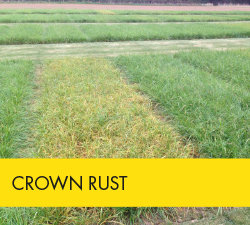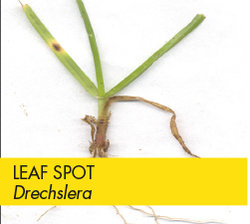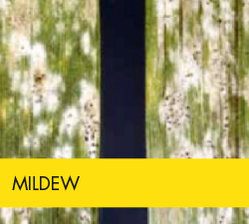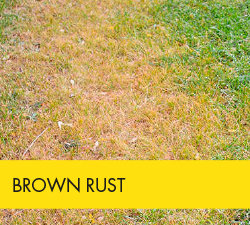Grass Diseases

Characterised by scattered orange spores over the leaves, seen in late August
and September.
Occurs with high rates of grass growth combined with warm days and dewy nights i.e more uncontrolled growth results in more dead material at base of plant (higher probability of harbouring spores).
Tends to reduce yield as a result of plant stress and decrease in palatability.
Spread by wind and rain splash

A fungal infection that produces brown spots surrounded by yellowing tissue, which is encouraged by wet and cloudy weather.
Cattle reject infected areas leading to excess growth and more disease build up.
Controlled by variety selection and excess growth management, topping grazing and encouraging new growth.
Spread by spores, wind and rain.

Characterised by White “sappy substance” and becomes more active during the spring and autumn periods.
Spores are produced in warm, humid conditions and damage leaf area, reducing yield and palatability. Particularly susceptible plants are the faster growing ryegrasses species such at Italians.
Spread by wind and rain splash and remain dormant through winter periods to become active early spring. Dead material and excess growth provide shade and high humidity, the ideal environment for mildew!

Brown Rust occurs early in the season, during April and May and throughout England and Wales.
It only affects ryegrasses and is a different species to the brown rusts that infects wheat and barley.
It can reach moderate levels in some varieties, but most have good resistance.

